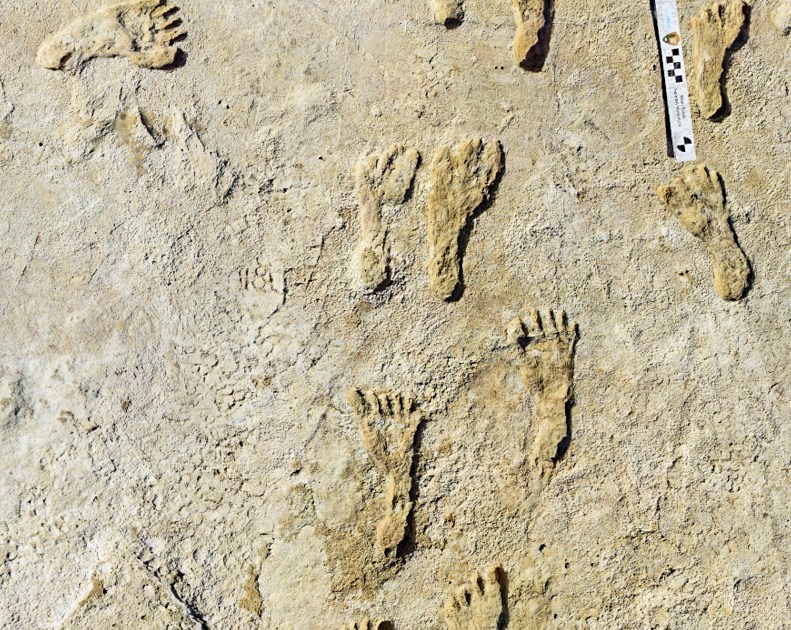
Fossilised footprints dating 23,000 years push back the known date the continent was colonised by thousands of years.
Footprints dating back 23,000 years have been discovered in the United States, suggesting humans settled North America long before the end of the last Ice Age, according to researchers.
The findings announced on Thursday push back the date at which the continent was colonised by its first inhabitants by thousands of years.
The footprints were left in mud on the banks of a long-since dried up lake, which is now part of a New Mexico desert.
Sediment filled the indentations and hardened into rock, protecting evidence of our ancient relatives, and giving scientists a detailed insight into their lives.
The first footprints were found in a dry lake bed in White Sands National Park in 2009. Scientists at the United States Geological Survey recently analysed seeds stuck in the footprints to determine their approximate age, ranging from 22,800 to 21,130 years ago.
“Many tracks appear to be those of teenagers and children; large adult footprints are less frequent,” write the authors of the study published in the American journal Science.
“One hypothesis for this is the division of labour, in which adults are involved in skilled tasks whereas ‘fetching and carrying’ are delegated to teenagers.
“Children accompany the teenagers, and collectively they leave a higher number of footprints.”
Researchers also found tracks left by mammoths, prehistoric wolves, and even giant sloths, which appear to have been approximately at the same time as the humans visited the lake.
Historic findings
The Americas were the last continent to be reached by humanity.
For decades, the most commonly accepted theory has been that settlers came to North America from eastern Siberia across a land bridge – the present-day Bering Strait.
From Alaska, they headed south to kinder climes.
Archaeological evidence, including spearheads used to kill mammoths, has long suggested a 13,500-year-old settlement associated with so-called Clovis culture – named after a town in New Mexico.
This was considered the continent’s first civilisation, and the forerunner of groups that became known as Native Americans.
However, the notion of Clovis culture has been challenged over the past 20 years, with new discoveries that have pushed back the age of the first settlements.
Generally, even this pushed-back estimate of the age of the first settlements had not been more than 16,000 years, after the end of the so-called “last glacial maximum” – the period when ice sheets were at their most widespread.
This episode, which lasted until about 20,000 years ago, is crucial because it is believed that with ice covering much of the northern parts of the continent, human migration from Asia into North America and beyond would have been very difficult.
https://news.google.com/__i/rss/rd/articles/CBMiZWh0dHBzOi8vd3d3LmFsamF6ZWVyYS5jb20vbmV3cy8yMDIxLzkvMjQvb2xkZXN0LWh1bWFuLWZvb3RwcmludHMtaW4tbm9ydGgtYW1lcmljYS1mb3VuZC1pbi1uZXctbWV4aWNv0gFpaHR0cHM6Ly93d3cuYWxqYXplZXJhLmNvbS9hbXAvbmV3cy8yMDIxLzkvMjQvb2xkZXN0LWh1bWFuLWZvb3RwcmludHMtaW4tbm9ydGgtYW1lcmljYS1mb3VuZC1pbi1uZXctbWV4aWNv?oc=5
2021-09-24 09:14:34Z
52781898425939
Tidak ada komentar:
Posting Komentar